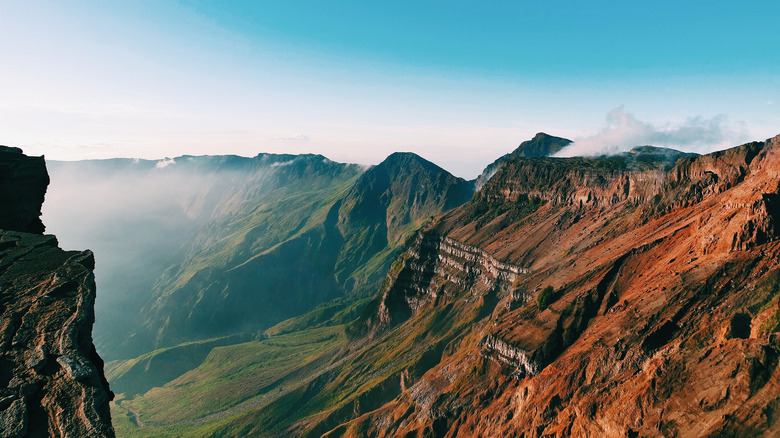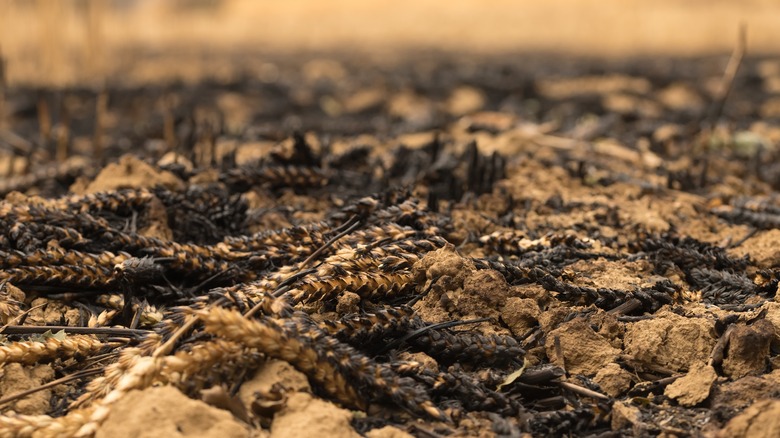The Historic 1815 Eruption Of Mount Tambora Claimed A Staggering Number Of Lives
It was April in the Dutch East Indies, as Indonesia was called in 1815. The first explosions on April 5 sounded like cannon fire, and soldiers were called out to make sure they weren't under attack, according to the Memoir of the Life and Public Services of Sir Thomas Stamford Raffles. On the island of Sumbawa, which is part of the province of West Nusa Tengarra, what had been a dormant volcano, Mount Tambora, rumbled to life.
Soon day turned to night, ash covered everything, and more explosions shook the island. Even 500 miles to the west, people couldn't see for more than 300 yards because of the thick ash that hung in the air, per Raffles' memoir. On the evening of April 10, another massive explosion sent ash 20 miles into the atmosphere and covered the island in a thick blanket of ash nearly five feet thick, according to History.
The real killer came afterwards
Along with raining ash that was heavy enough to crush houses, three massive columns of fire shot into the night sky, as red hot lava poured from the center of Mount Tambora wiping out entire villages in its path, while boiling hot rain lashed the survivors, according to the Center for Science Education and the 2015 book "Tambora: The Eruption That Changed the World." The explosion set off tsunamis that raged across the Java Sea causing more death and destruction. Mount Tambora's series of eruptions that April killed an estimated 10,000 people on the island, per Smithsonian. And the worst was yet to come.
In the aftermath of the Mount Tambora's eruption, considered the largest ever recorded, the volcano went from being 14,000 feet tall to 9,000, per History. The horrific initial death toll was soon eclipsed in the following months. The island chain's food crops were wiped out and starvation claimed more and more victims. About 100,000 Indonesians died from a lack of food as a direct result of the eruptions, according to the East Asia Forum.
The eruption affected the entire planet
It wasn't just Indonesia that felt the awful effects of Mount Tambora's eruption. In a few weeks, the ash cloud flung into the stratosphere by the volcano had circled the globe at the equator and blocked the sunlight, according to "Tambora: The Eruption That Changed the World." Initially, the only noticeable effect was spectacular sunsets, but by the next year it was something much less pretty that ensued. Half a world away from Mount Tambora, strange weather plagued Europe and the United States in the summer of 1816 in what would become known as the year without a summer. Snow and drizzling rain became the norm rather than warm, sunny days.
In China, food crops, water buffalo, and trees began dying, per Smithsonian. The planet's temperature dropped by three degrees celsius, and crops died from either late frosts that stretched into the summer or a lack of sunlight, per the Center for Science Education. The scarcity of crops resulted in a chain reaction of rising food and transportation costs, and famine, per the Center for Science Education, causing still more problems that stretched into the next few years. The total tally of the dead that resulted from Mount Tambora's eruption and the year without a summer may never truly be known.


